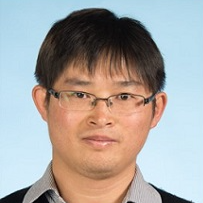Fluid-Structure Interaction with Applications in Biomechanics
A special issue of Fluids (ISSN 2311-5521).
Deadline for manuscript submissions: closed (15 April 2023) | Viewed by 3564
Special Issue Editors
Interests: computational biomechanics; biofluid mechanics; fluid-structure interaction; immersed boundary method
Special Issues, Collections and Topics in MDPI journals
Interests: biological fluid mechanics; flow–structure interaction; machine learning
Special Issue Information
Dear Colleagues,
Fluid–structure interactions of biological systems (e.g., swimming, flying and arterial flows) have attracted considerable attention in recent years, with the aim of understanding the high aero/hydrodynamic performance of fish, insects and birds, as well as the flow physics, and applying the knowledge in bionic robotics, flyers and biomedical devices. Numerical simulation becomes more and more important in the study of biological systems, for its convenience in controlling relevant parameters and obtaining comprehensive flow details. To further explore the mechanism of biological systems, it is necessary to develop more realistic numerical models. This Special Issue seeks to highlight recent advances in the numerical simulations of fluid–structure interactions of biological systems. We welcome articles on themes including but not limited to locomotion with multi-degree freedom, locomotion in the complex flow field, body–fin (wing) interaction, active and passive mechanisms in flexible structures, fluid dynamics of microstructures on surface, flying and swimming in turbulence, collective biological locomotion and swimming and flying based on machine learning and arterial flows.
Dr. Fang-Bao Tian
Dr. Yi Zhu
Dr. Zhengliang Liu
Guest Editors
Manuscript Submission Information
Manuscripts should be submitted online at www.mdpi.com by registering and logging in to this website. Once you are registered, click here to go to the submission form. Manuscripts can be submitted until the deadline. All submissions that pass pre-check are peer-reviewed. Accepted papers will be published continuously in the journal (as soon as accepted) and will be listed together on the special issue website. Research articles, review articles as well as short communications are invited. For planned papers, a title and short abstract (about 250 words) can be sent to the Editorial Office for assessment.
Submitted manuscripts should not have been published previously, nor be under consideration for publication elsewhere (except conference proceedings papers). All manuscripts are thoroughly refereed through a single-blind peer-review process. A guide for authors and other relevant information for submission of manuscripts is available on the Instructions for Authors page. Fluids is an international peer-reviewed open access monthly journal published by MDPI.
Please visit the Instructions for Authors page before submitting a manuscript. The Article Processing Charge (APC) for publication in this open access journal is 1800 CHF (Swiss Francs). Submitted papers should be well formatted and use good English. Authors may use MDPI's English editing service prior to publication or during author revisions.
Keywords
- swimming and flying
- fluid–structure interaction
- collective locomotion
- body–fin interaction
- swimming in turbulence
- passive hydrodynamics of animal locomotion
- machine learning
- arterial flow
Benefits of Publishing in a Special Issue
- Ease of navigation: Grouping papers by topic helps scholars navigate broad scope journals more efficiently.
- Greater discoverability: Special Issues support the reach and impact of scientific research. Articles in Special Issues are more discoverable and cited more frequently.
- Expansion of research network: Special Issues facilitate connections among authors, fostering scientific collaborations.
- External promotion: Articles in Special Issues are often promoted through the journal's social media, increasing their visibility.
- Reprint: MDPI Books provides the opportunity to republish successful Special Issues in book format, both online and in print.
Further information on MDPI's Special Issue policies can be found here.






